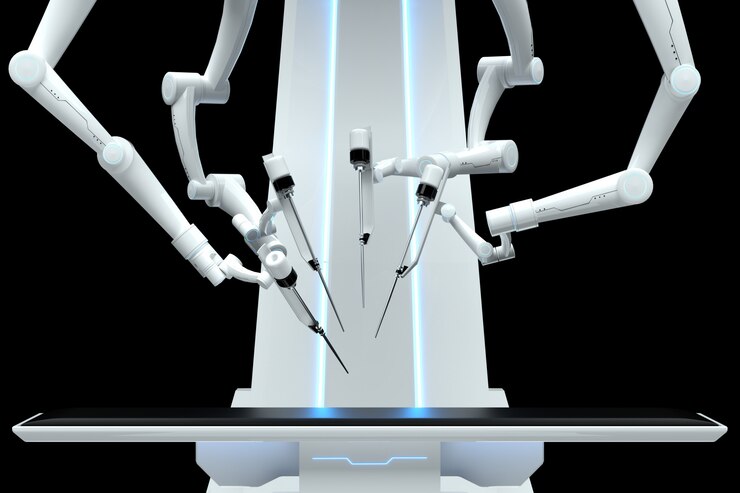Uncategorized
Robotics in surgery: innovations and advancements

In recent years, the field of robotics has made remarkable strides in various industries, and one area that has witnessed significant progress is surgery. Robotic surgical systems have revolutionized the way complex procedures are performed, enhancing precision, minimizing invasiveness, and improving patient outcomes. This article explores the innovations and advancements in robotics that have transformed the landscape of surgical practices.
Enhanced precision and accuracy,
One of the primary advantages of robotics in surgery is the enhanced precision and accuracy it offers. Robotic surgical systems provide surgeons with an exceptional level of control and dexterity, surpassing the limitations of traditional surgical techniques. These systems employ robotic arms equipped with specialized instruments and high-definition cameras, allowing surgeons to perform intricate movements with greater accuracy. The robotic arms filter and stabilize the surgeon’s hand movements, eliminating tremors and enabling precise maneuvers, even in confined spaces.
Minimally invasive procedures,
Robotics has paved the way for minimally invasive procedures, which have become increasingly common in modern surgical practice. Traditional open surgeries often require large incisions, resulting in prolonged recovery times, increased pain, and a higher risk of complications. In contrast, robotic-assisted surgeries utilize smaller incisions, reducing trauma to the patient’s body. The robotic arms, controlled by the surgeon, access the surgical site through these small incisions, enabling the precise manipulation of instruments with minimal disruption to surrounding tissues. Minimally invasive procedures often result in shorter hospital stays, faster recovery, and reduced scarring.
Improved visualization,
Visualization plays a crucial role in surgical procedures, and robotics has greatly enhanced this aspect. Robotic surgical systems incorporate high-definition cameras that provide surgeons with a three-dimensional, magnified view of the surgical site. This improved visualization allows for better identification of anatomical structures, enhanced depth perception, and a more comprehensive understanding of the surgical field. Surgeons can navigate complex structures with greater ease, reducing the risk of inadvertent damage and improving the overall surgical precision.
Remote surgery and telemedicine,
One of the most groundbreaking applications of robotic surgery is the potential for remote surgery and telemedicine. With advancements in network connectivity and latency reduction, it is now possible for surgeons to perform procedures on patients located in remote areas or even in different countries. In such cases, the surgeon controls the robotic system from a remote console, which replicates their hand movements with extreme precision. This technology has the potential to bring specialized surgical expertise to underserved areas, facilitate collaboration between surgeons across the globe, and increase access to quality healthcare.
Challenges and future directions,
While the adoption of robotic surgery has grown rapidly, there are still challenges to overcome. Cost remains a significant barrier, as robotic systems are expensive to acquire and maintain. Surgeons also need specialized training to operate these systems effectively. Additionally, concerns regarding patient safety, data security, and liability in remote surgery must be carefully addressed.
Looking ahead, the future of robotics in surgery is promising. Further advancements in artificial intelligence (AI) and machine learning algorithms will improve the capabilities of robotic systems, enabling autonomous or semi-autonomous procedures. Integrating advanced imaging techniques, such as real-time MRI or ultrasound, with robotic systems could enhance surgical planning and decision-making. Moreover, the miniaturization of robotic instruments could expand the scope of robotic surgery to more delicate and hard-to-reach areas of the body.
Robotics has revolutionized the field of surgery, providing surgeons with enhanced precision, improved visualization, and the ability to perform minimally invasive procedures. These advancements have translated into better patient outcomes, reduced pain and recovery time, and expanded access to specialized surgical expertise. While challenges remain, the future of robotics in surgery holds immense potential for further innovation and continued improvement in patient care. With ongoing research and development, robotics will continue to shape the future of surgical practice, making procedures safer, more efficient, and more accessible than ever before.


